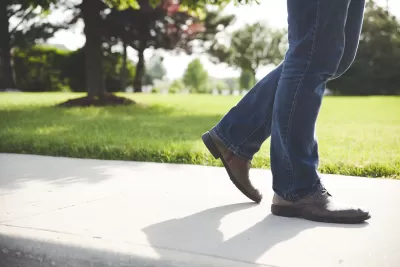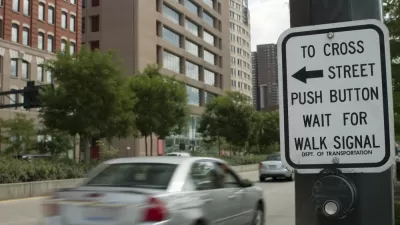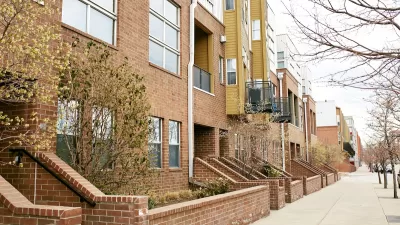Over a quarter of city blocks lack sidewalk infrastructure. An advocacy project to reduce traffic speeds and increase pedestrian safety on these streets has evolved into a city-funded program.

In Seattle, 45,000 blocks lack sidewalks, and last year the Seattle Neighborhood Greenways, a neighborhood-based, volunteer coalition, launched a DIY program to make streets safer for pedestrians. "The concept is called Home Zones and is meant to create 'living streets' that can be shared between cars and people," writes Emily Nonko.
After a Home Zones pilot program in a north Seattle neighborhood, the Seattle City Council allocated $350,000 for an expanded program. "The greater vision of Home Zones, according to [Gordon] Padelford, is installing a combination of speed humps, traffic diverters, wayfinding signage and public artwork — lower-cost options in lieu of sidewalks," notes Nonko.
The Seattle Department of Transportation is overseeing the official pilot program, which will be implemented in two neighborhoods. But advocates say progress has been slow and the program still has not been fully funded. They also want to see more funding in next year’s city budget for implementable low-cost alternatives to sidewalks.
FULL STORY: DIY Initiative Addressing Lack of Seattle Sidewalks Becomes a City Pilot

Alabama: Trump Terminates Settlements for Black Communities Harmed By Raw Sewage
Trump deemed the landmark civil rights agreement “illegal DEI and environmental justice policy.”

Planetizen Federal Action Tracker
A weekly monitor of how Trump’s orders and actions are impacting planners and planning in America.

Why Should We Subsidize Public Transportation?
Many public transit agencies face financial stress due to rising costs, declining fare revenue, and declining subsidies. Transit advocates must provide a strong business case for increasing public transit funding.

Understanding Road Diets
An explainer from Momentum highlights the advantages of reducing vehicle lanes in favor of more bike, transit, and pedestrian infrastructure.

New California Law Regulates Warehouse Pollution
A new law tightens building and emissions regulations for large distribution warehouses to mitigate air pollution and traffic in surrounding communities.

Phoenix Announces Opening Date for Light Rail Extension
The South Central extension will connect South Phoenix to downtown and other major hubs starting on June 7.
Urban Design for Planners 1: Software Tools
This six-course series explores essential urban design concepts using open source software and equips planners with the tools they need to participate fully in the urban design process.
Planning for Universal Design
Learn the tools for implementing Universal Design in planning regulations.
Caltrans
Smith Gee Studio
Institute for Housing and Urban Development Studies (IHS)
City of Grandview
Harvard GSD Executive Education
Toledo-Lucas County Plan Commissions
Salt Lake City
NYU Wagner Graduate School of Public Service





























